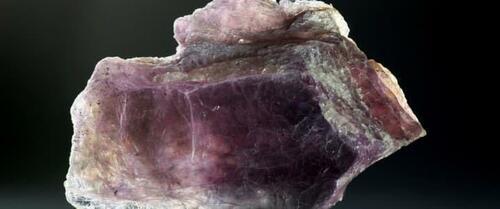Central Asia Emerges As Epicenter Of Rare Earth Mineral Rush
Authored by Haley Zaremba via OilPrice.com,
Central Asian countries like Kazakhstan, Uzbekistan, and Tajikistan are emerging as key players in the rare earth mineral market.
These countries offer vast reserves, political stability, and a willingness to develop their resources, attracting interest from Western powers, China, and Russia.
Securing access to rare earth minerals is crucial for countries to achieve their clean energy goals and reduce dependence on China, which currently dominates the market.
Securing reliable and strategic supply chains for rare earth minerals has become a geopolitical battleground for world superpowers in the intensifying context of the global clean energy transition. Decarbonizing the global economy will require unfathomable amounts of clean energy infrastructure from solar panels and wind turbines to lithium-ion batteries for energy storage and to power electric vehicles. All of these are going to require a whole heck of a lot of primary materials, and especially metals, many of which fall under the category of ‘rare earths.’
The term rare earth mineral is a bit of a misnomer, as these elements are not really that scarce. But global production capacity is relatively limited compared to demand, as the need for these materials has only recently skyrocketed as the world finally gets serious about a major energy pivot. Shoring up reliable and affordable access to these minerals is therefore a critical step in staying competitive in a fast-growing and fast-changing sector. And so far, China is setting the pace for such acquisitions and, in doing so, blowing its competition away.
Beijing has been eagerly acquiring rare earth reserves and contracts in emerging markets across the world for years now, resulting in what is currently an effective chokehold on global supply chains.
Today, China is home to 34% of the world’s rare earths, carried out 70% of global rare earth mining in 2022, and represents at least 85% of global capacity to process rare earth ores into manufacturing materials. What is more, China has managed to hold its distinction as the only large-scale producer of heavy rare earth ores on the planet thanks to “decades of state investment, export controls, cheap labour and low environmental standards,” the Oxford Institute of Energy Studies asserts in its 2023 report on China’s rare earths dominance and policy responses.
China’s outsized role has led to a dangerous level of international reliance on Chinese exports to meet global and national energy and climate goals. Becoming competitive with China and easing this imbalance will therefore require other global powers to ramp up their own efforts to secure supply contracts for these elements in the places where they are naturally occurring and where their extraction is relatively affordable.
The United States and China have already faced off for rare earth dominance in Latin America, but the U.S. has been relatively unsuccessful to get a significant toehold in the so-called ‘lithium triangle’ of Argentina, Chile and Bolivia. Africa has significant reserves of rare earth minerals, but is generally characterized by political instability and corruption which dampen its appeal to would-be investors. As a result, the hottest new battleground for rare earth contracts is currently emerging in Central Asia.
Kazakhstan, Uzbekistan and Tajikistan are home to vast quantities of valuable rare earth minerals, and seem to have the political and economic conditions that the West is looking for.
“Unlike in the West, Central Asian governments are enthusiastic about the prospect of turning their vast deposits of [rare earth minerals and rare metals] into a new source of revenue for the local economies,” The Interpreter recently reported.
Kazakhstan is already “taking strategic steps to strengthen its position in the global electric vehicle (EV) battery market by increasing the output of critical metals,” according to reporting from Dario, and the Kazakh President Kassym-Jomart Tokayev has even referred to these materials as the “new oil”.
The massive central Asian nation has already signed deals with the European Union and the United Kingdom, and could potentially be an amenable trading partner for the United States as well.
The only problem is that Western powers are not the only major economies with their sights set on Central Asian resource riches.
China and Russia are also eager to tap into these nascent markets, and have certain competitive advantages over the West.
“By virtue of history, geography, and regional and cultural particularities and dependencies, Central Asian countries are bound with Russia and China,” the Interpreter reports.
By the same token, however, these former soviet republics are navigating the solidification of their national identities, and a move away from Russian control could also serve as a point of strategic interest.


